Looking for a Lost Pebble
2007
Anyang Public Art Project (APAP), Anyang, Korea
Magic Mirror #1, #2
2007
One-way mirror, sensor, LED light panel, backlit film
70 x 45 cm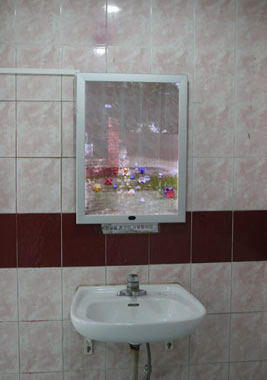
Crystal
2007
Steel, polyurethane paint
160 x 160 x 160 cm
Shell Sink
2007
Shells, fiberglass-reinforced plastic, stainless steel
140 x 70 x 70 cm
 |
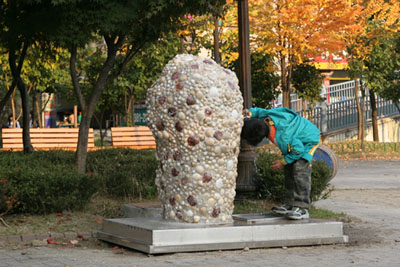 |
Fruit Tree Street Light
2007
Street light with several globe lamps
450 cm high
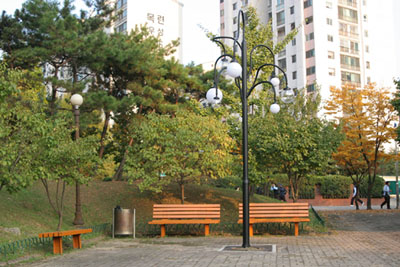
Triple Bench #1, #2, #3
2007
Stainless steel
Each 50 x 50 cm
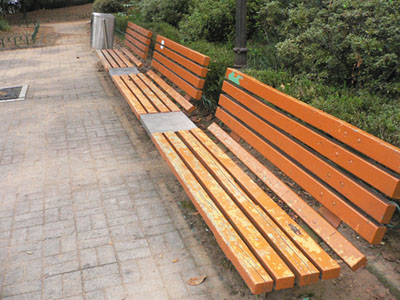
Willow Sister
2007
Willow tree (planted)
140 x 70 cm
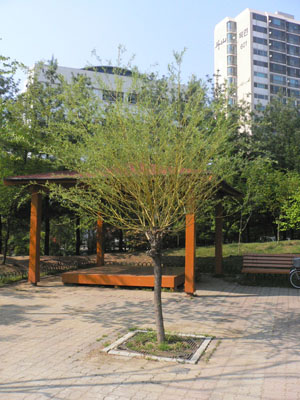
Black and White Playground
2007
Enamel paint (playground facility changes the color from black to white every 4 months)
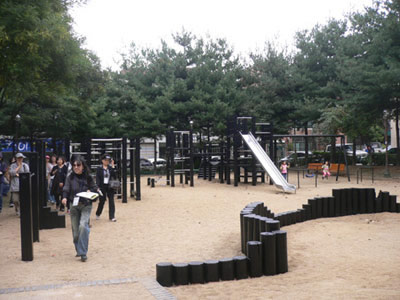 |
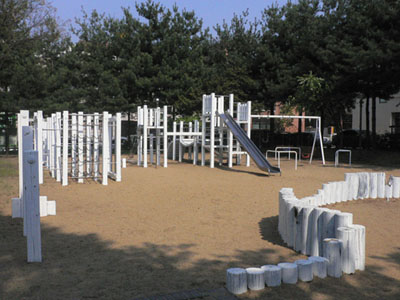 |
Abrupt Lookout Station
2007
Steel, paint
230 x 120 cm
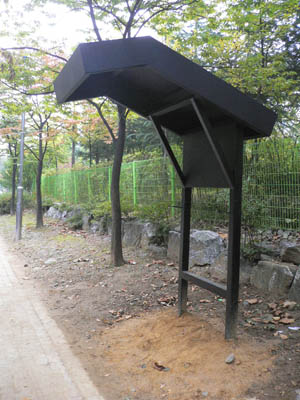
Big Yellow Hula-Hoop
2007
Steel, polyurethane paint
2000 x 2000 cm

For this public art project in Anyang, a satellite city of Seoul, the artist's first criteria for choosing a site was intimacy. A series of twelve related works were spread out across four adjacent children's parks nestled among high-rise residential apartment complexes. The parks create direct relationships between the neighborhood and its residents, serving as in-between passages that are not visible or accessible from the main road. One special project was inserted in each section in order to reflect both the context and the artist's own sense of the place. While each park is fitted with the same playground elements, Yang introduced subtle alterations, including Big Yellow Hula-Hoop, a painted yellow circle surrounding a playground; three versions of Triple Bench, in which existing benches were joined together by stainless steel plates; Fruit Tree Street Light, a street lamp with bending branchlike arms that borrows the vernacular of existing lampposts; Willow Sister, in which she planted a young willow tree, a plant that has melancholic associations for the artist and that is not on the city's official list of trees to be planted in public spaces; and Black and White Playground, whereby the playground was painted white, then black, changing every four months. In one of the most difficult and disturbing elements in the parks, the public toilets, Yang replaced the bathroom mirrors with two-way glass, which, when illuminated (by lights triggered by a motion detector), reflected an image of the park landscape strewn with origami objects. The sink became a giant shell sculpture, providing water. Together, these scattered fragments quietly distinguished the otherwise anonymous character of the look-alike parks.
back to alphabetical order |
back to chronological order |